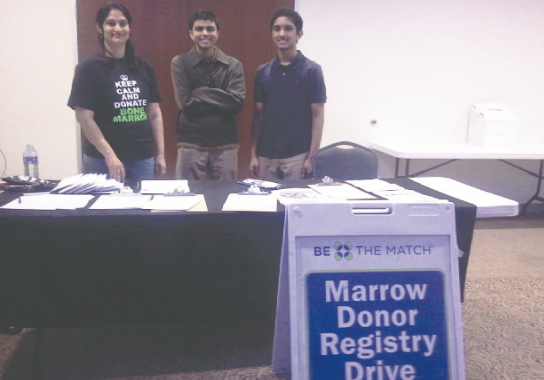Donating Bone Marrow: Win-win Situation
HOUSTON: The main goal of our project is to bring awareness to the need for potential bone marrow donors and the importance of bone marrow donations. This applies to not only the public as a whole, but also to certain communities that are under-represented in the donor registry. Coming from the South Asian community, an under-represented population, means we have the opportunity to help our people understand the necessity to figuratively “give life”. In such a close-knitted community, it takes a little coaxing to help the folks realize that they are not at a loss. Donating bone marrow is effortless with no side effects, and provides the platform for saving another human being’s life; one could say it is a win-win situation. And simply put, being on the registry could mean that a potential donor may never get called to donate, but the possibility that he or she is willing to donate is the most important aspect. Yet, these scenarios also apply to the public in general, and not just a certain group. During our project, we aimed to register at least a hundred people, hundred being a moderate number. So far we have exceeded our goal and aim to continue doing so.
In one of our drives, we registered nearly 61 people, most of whom from the South Asian community. We found that when we take our time and explain the entire registration process, the pros and cons (virtually no cons) of donating, and answer their questions effectively, our potential donor becomes satisfied with what he is about to do. We are capable of bringing him or her from a closed mind and provide the donor a means to save another person’s life.
However, targeting South Asians is not enough. By conducting drives at the Houston Methodist hospital, we were able to help a wide variety of people, not just a particular community, understand the necessity of bone marrow donations. An important aspect of our awareness is to increase the number of registrants from different ethnic backgrounds because patients with different backgrounds usually only find matches with in their own ethnicity. If there is no match in the immediate family, then the next best target group for donations comes from the ethnic group.
The project has impacted a great deal of people including potential donors. When we brought most of our registrants to our drive booths, their faces would be grumpy looking, perhaps irritated, however after they had registered, we could see a genuine smile on their face from their ability to potentially help save a life. But over a year’s time, our project helped us realize that we too need to donate when we come of age. When we talk to patients, we can see in their eyes the gratitude towards the donations that they receive.

